#airworthiness certificate
Text
Boom Supersonic Advances Flight Preparations for XB-1: Key Milestones Completed
"Boom Supersonic's XB-1: Advancing towards first flight, revolutionizing supersonic travel. #aviation #supersonic"
XB-1 has undergone extensive ground testing since arriving, including taxi testing this week at the Mojave Air & Space Port in Mojave, California.
Boom Supersonic, the pioneer in supersonic travel, has achieved significant milestones in the development of XB-1, their groundbreaking technology demonstrator aircraft. Leveraging cutting-edge advancements in aviation technology, XB-1 is a stepping…

View On WordPress
#aerodynamics#airworthiness certificate#avionics#Boom Supersonic#carbon fiber composites#computational fluid dynamics#FAA#first flight#flight preparations#ground testing#milestones#Mojave Air & Space Port#Overture#safety culture#supersonic jet#sustainable aviation fuel#sustainable supersonic travel#T-38 trainer aircraft#technology demonstrator#test pilots#XB-1
0 notes
Text
this plane video is NOT cute
these aircraft are clearly the result of irresponsible breeding, having many malformed features that are detrimental to their quality of life.

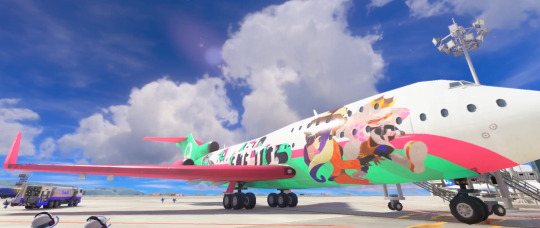
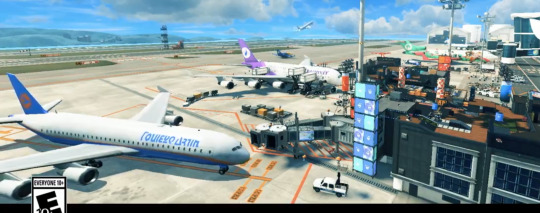
#splatoon#splatoon 3#airplanes#avgeek#listen i couldnt not. look at those poor things. revoke their certificate of airworthiness RIGHT NOW
46 notes
·
View notes
Text
How long before they’re crashing into your roof?
79 notes
·
View notes
Text
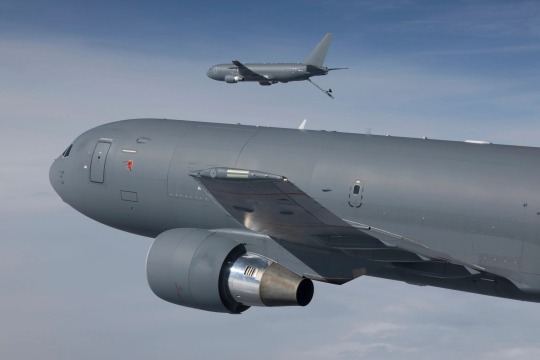
USAF: Boeing's KC-46A and T-7A face more delays
Fernando Valduga By Fernando Valduga 03/14/2024 - 11:00 in Military
The Air Force's head of acquisitions, Andrew Hunter, noted possible future problems for the KC-46A and said that production of the T-7A could start “a little later” than previously predicted, but he remained confident about the future of the two aircraft.
For years, the fixed price agreements that Boeing has signed for programs such as the air refueling plane KC-46A Pegasus and the coach T-7A Red Hawk have been headaches for the aerospace giant amid billions in losses due to delays, supply chain restrictions and development problems. And now, according to the U.S. Air Force acquisition leader, more delays for both efforts may be coming.
Testifying before the Chamber's Armed Services Maritime Power and Projection Forces Subcommittee on Tuesday, Andrew Hunter said that an update to the long-problematic vision system of the KC-46A would probably arrive in 2026, surpassing a projected field date already 19 months late, from October 2025. After the hearing, he told reporters separately that the service would "probably" approve the production of coach T-7A later than previously expected.
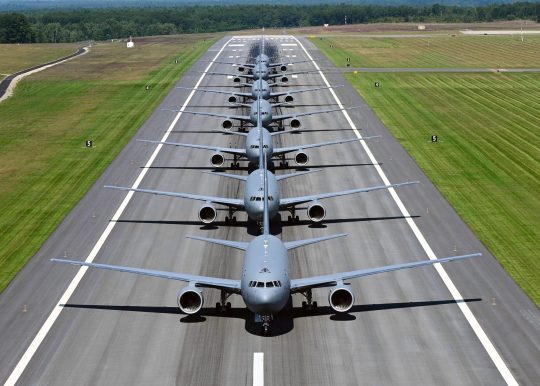
“There is some scheduling pressure,” Hunter told lawmakers about the implementation of a new vision system for the KC-46A, called RVS 2.0. "And depending on the completion of the airworthiness certification process of the Federal Aviation Administration (FAA), I cannot guarantee that we would be in a position to enter the field in 25. It could be '26. And that's really likely - I think it will probably take the field in 26."
After the hearing, Hunter explained to reporters that a possible Pegasus delay is linked to the FAA certification process, arguing that when RVS 2.0 is integrated, “you need to make sure that this will not affect anything else on the plane. Therefore, this makes the airworthiness process more complex than it may seem, because it is essentially more than just the cameras you are dealing with."
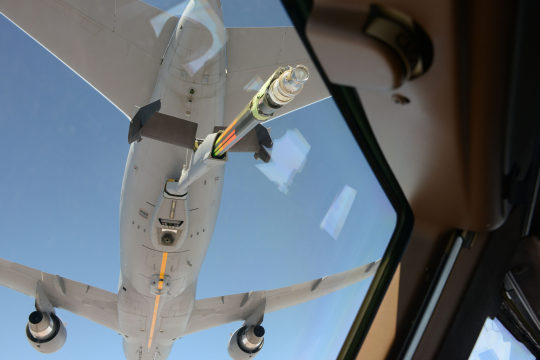
Hunter added that he is "confident" that USAF and Boeing "have the right project" and that the team "will go through the entire process of airworthiness in the near future".
So far, Boeing has reported losses of more than $7 billion in the Pegasus program due to its fixed price structure, although it is not clear whether more losses could be associated with an additional delay for RVS 2.0. Boeing has defured the questions to the U.S. Air Force, but the company had already praised the capabilities of the new vision system as providing marked improvements over the basic version.
Despite the problems in the vision system, the aircraft has been released for combat deployment and can refuel most of the U.S. fleet, except the A-10, due to a separate problem with an actuator on the tanker's boom, which should be resolved by fiscal year 26. Hunter suggested last year that the service was inclined to buy more tankers as part of a new strategy to continue the retirement of the service's former KC-135 refuelers, although a service official later said that a procurement strategy had not yet been decided.

Europe's Airbus positioned itself as an alternative if the U.S. Air Force decided to participate in a competition, after its partner Lockheed Martin announced that it was giving up.
In his testimony this week, Hunter said that autonomous capabilities could be incorporated into the future of air refueling, but told journalists that this would not be a requirement for the next installment of the acquisition of tankers.
"I think this would be something that we would consider as an independent effort and potentially put into practice in the future," he said about autonomous replenishment.
In a written statement on Tuesday [PDF], Hunter additionally said that the service would slightly expand its current contract with Boeing, adding four KC-46As for a total registration program of 183.
T-7A 'A little later than we expected'
Meanwhile, budget documents confirmed the decision of the U.S. Air Force to halve the 2025 fiscal acquisition of the T-7A Red Hawk training aircraft, intended to replace the former T-38 Talon, from 14 to seven, and indicate that delays in the program are also near.
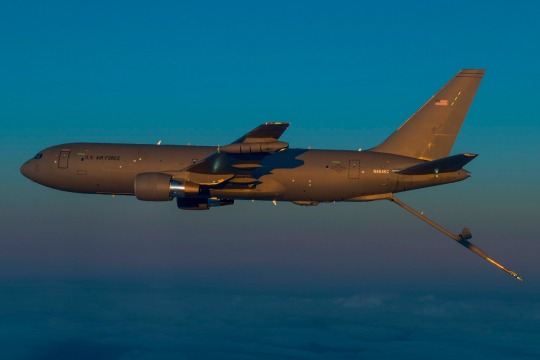
This program was reformulated last year to reflect a delay of more than two years. A subsequent surveillance report found that problems with the flight control software and the jet's escape system continued to pose risks to the already delayed schedule, especially when the jet moved to enter flight tests, where the U.S. Air Force could discover new flight control deficiencies.
Now, it seems that the coach's schedule may be a little longer. According to the Fiscal Year 2025 budget documents released by the service on Monday night, a decision of the Marco C - or the point at which the service officially approves a program to go into production - is projected for May 2025. Previously, authorities planned the C-Mark for February 2025, although the program allocated a full year of schedule margin for the decision.
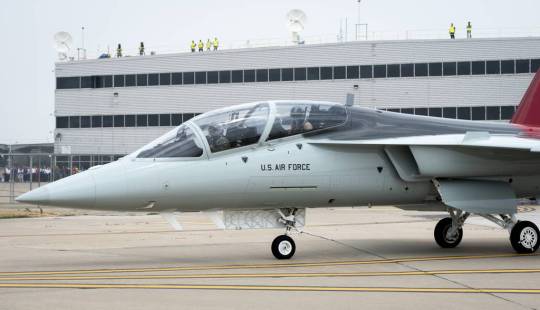
To help mitigate delays, Boeing began buying long-term parts to start making an eventual production decision. This approach required a special agreement between the U.S. Air Force, Boeing and the Defense Contracts Management Agency to oversee initial production, which the service said last year had been achieved.
In addition, as Aviation Week previously noted, budget documents also suggest that the initial operational capacity of the jet may be postponed for one year, from the second quarter of Fiscal Year 2027 to the second quarter of Fiscal Year 2028. So far, Boeing has reported losses of about $1.3 billion in the Red Hawk program, and it is not clear whether further delays could result in more charges. As with the KC-46, the company transferred questions about the T-7A to USAF, which did not immediately respond to a request for comment.
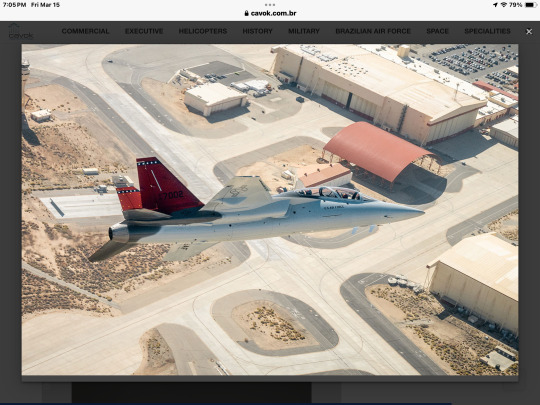
Speaking to reporters after Tuesday's hearing, Hunter explained that the decision to halve the purchase of T-7A in Fiscal Year 25 was mainly the result of high-level fiscal pressures. Still, he said that the size of the seven Red Hawks batch "is a good starting point" for the service.
He said that delays in the start of the flight test program may mean that the coach will be approved for production later than expected. The first USAF T-7A landed at Edwards Air Base in November.
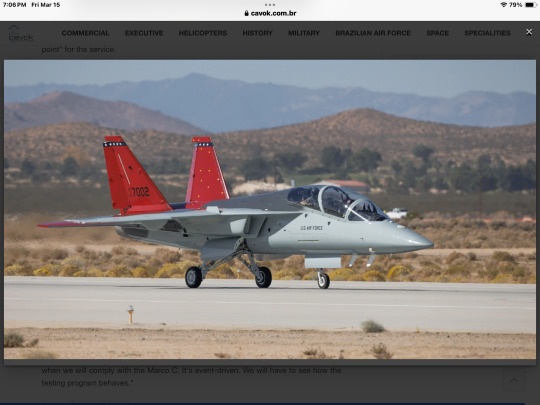
“We entered the flight test program a little later than we expected, so we will probably start production a little later than we expected,” Hunter said. “At the moment, the flight test program is doing relatively well. If we don't discover something unexpected, I believe we will go into production in fiscal year 2025."
Asked if the date of the Marco C of February 2025 is at risk, he replied: "To define when we will comply with the Marco C. It's event-driven. We will have to see how the testing program behaves."
Source: Breaking Defense
Tags: Military AviationKC-46A PegasusT-7A Red HawkUSAF - United States Air Force / U.S. Air Force
Sharing
tweet
Fernando Valduga
Fernando Valduga
Aviation photographer and pilot since 1992, he has participated in several events and air operations, such as Cruzex, AirVenture, Dayton Airshow and FIDAE. He has works published in specialized aviation magazines in Brazil and abroad. He uses Canon equipment during his photographic work in the world of aviation.
Related news
MILITARY
Russia releases video of destruction of Ukrainian helicopters in Donetsk
14/03/2024 - 09:00
SMOKE SQUADRON
IMAGES: Smoke Squadron holds demonstrations in Pernambuco
14/03/2024 - 08:21
MILITARY
USAF's NGAD program will receive US$ 3.4 billion in the 2025 budget
13/03/2024 - 18:43
MILITARY
Taiwan acquires additional MQ-9B SkyGuardian drones from the US
13/03/2024 - 18:18
HELICOPTERS
Bell receives contract to manufacture the AH-1Z attack helicopters for Nigeria
13/03/2024 - 16:00
ARMAMENTS
US approves sale of JASSM-ER, AMRAAM and Sidewinder missiles to Poland
13/03/2024 - 14:00
12 notes
·
View notes
Text

Oh Aerocar of the 1949s ily so much, such a silly creature they were. 💕 I might have had too much fun watercoloring this fella. :'3
Brief history on this little critter + bit of a geekout on aircraft design under the cut ~🛩
I always find those articles that claim these random millionaires are supposedly "making the 1st flying car" and they end up showing off either yet another quadcopter or some other VTOL monstrosity with 10000 little motors on it. (Who is designing those ugly things for real?! I love weird experimental aircraft, but they still have to follow the #1 law of flight: aircraft only fly as good as they look) Meanwhile this cute little fella's been around since 1949. At the time it was both street legal and had a Civil Aeronautics Association (pre FAA) airworthiness certification! That's right, this was a certified airplane that was also a car! :D It could drive about 60 MPH on the road and flew about 120 MPH in cruise-which is about the same as the average Cessna 172 on a good day. 😆
It actually entered production and about 8 were made, but despite the fact there was a market for it at the time and many people did place orders for them, the designer, Moulton Taylor, just never made any more than that because they turned out to be too complex and expensive to build. Tho he did design and build other varients and made plans to build em available (and some people have built flying versions from plans) the concept just didn't exactly takeoff among homebuilders.
Don't blame em personally, I'm not too big on the idea of flying planes that utilize driveshafts for their propellers. Too much room for error when you add more moving parts to an aircraft. (helicopters dni) Still cute little aircraft tho, their shape, history, and design sure is neat! And there's one that still takes to the skies regularly! I'd love to meet the pilot one day and ask how it handles :]
Maybe the design could be revisited in the future? Maybe replace the O-320 Lycoming with one of those microjets? Maybe make the fuselage from composites? :o
#planeposting#planes#aviation#avgeek#aviation history#experimental aircraft#aerocar#flying car#aviation art#my doodles
19 notes
·
View notes
Text
Flying car company granted FAA certificate, aims for 2025 release | WZTV
4 notes
·
View notes
Photo
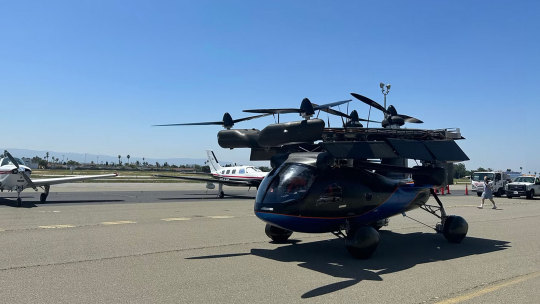
ASKA A5 Flying Car Awarded FAA Special Airworthiness Certification
It is more like a driveable aircraft.
Follow us for more Tech Culture and Lifestyle Stuff.
3 notes
·
View notes
Text
Me, at any given point in time: where is N6937C Star of America. What happened to her.
[long story - it's a Lockheed Constellation aircraft (L-1049 Super Constellation), the last (?) that was airworthy I believe, and it was owned by 'Save-A-Connie' in my town (Kansas City MO), at the airline history museum at the old KC downtown airport. Save-A-Connie became the airline history museum, and during COVID, the airline history museum folded.
No one's really sure why. Financial problems? The state came and shut them down. Locked the hangers / buildings and called it a day, from what I was told.
The TWA museum, owned by a different group, is still operating down there but no one seems to KNOW what happened to the Connie, or the Lockheed L-1011 Tristar the airline history museum also owned, also a rare retired aircraft.
Both aircraft are incredibly historically important. The Connie could still fly, it was fully airworthy and taken care of, though it didn't have current FAA certification. The L-1011 was missing engines but was otherwise airworthy, it was flown into Kansas City to get it there, not dismantled.
I am foaming at the mouth to know what became of these aircraft. I can find NOTHING online - in fact, google still seems to suggest the airline history museum was open until recently. All online presence is still there suggesting it's open. it's not I've been down there. the people at the TWA museum have no clue.
Who owns the airline history museum's whole collection now??? The state of Missouri? I'm terrified the state won't even know what they have and just scrap these two historic aircraft, not to mention everything else in the museum's collection. That would be an absolute tragedy. Is anyone taking care of the Connie rn??? It needs maintenance to stay airworthy, engines started etc. I think they were behind on it all anyway but I'm. so concerned.
What happened to my babies. I've seen both aircraft. I saw the Connie FLY when I was a kid. My dad worked on the L-1011 (he was an avionics engineer with TWA)
WHERE ARE THESE AIRCRAFT. STILL AT CHARLES B. WHEELER?? WHO OWNS THEM? I'm foaming at the mouth.
Anyway anybody wanna write a letter to the state of Missouri with me and ask about an aircraft or two? Anyone know any millionaires willing to buy them from the state and donate them to the TWA museum? along with the hanger space? lol.
EDIT:
OH GOD LOOK WHAT I JUST FOUND
NOOOO
how dare ya'll threaten to take those historic aircraft 'to the curb' ???? HELLO?? SHUT THE FUCK UP?? im gonna bite and tear. I'm gonna go insane. dont do this , i can't find any recent news ,
3 notes
·
View notes
Video
N6101C (44-34624), Douglas A-26B-66-DL Invader, Harlingen, August 1974 by Gordon Riley
Via Flickr:
Constructed as an A-26B-66-DL by Douglas at Long Beach, Ca. United States Army Air Force with s/n 44-34624. From 1963 to 1964 to Farah Manufacturing Co, El Paso, TX with c/r N6101C. From 1966 to 1969 to Rogers Brothers, Beaumont, TX. 1969 to Texas State Optical Corp, 1969. Circa 25 Feb70 Certificate of airworthiness for N6101C (B-26B, 27903) issued. From 25Feb70 to 1977 to Confederate Air Force Inc, Harlingen, TX. Early 1981, reported damaged by fire during taxiing and later stored and used for spares.
1 note
·
View note
Text
KCAA Airworthiness Inspector Job

KCAA Airworthiness Inspector Job
Airworthiness Inspector Job, Airline Jobs In Kenya 2022,
AIRWORTHINESS INSPECTOR – KCAA SCALE 8
(REF: ASSR/AW/20/22) – (1 POST)
Scope of work / Duties / Responsibilities
This is the entry and training grade for Airworthiness Inspectors. On appointment, Airworthiness Inspectors shall be required to undertake the following training over a twelve (12) months period:
- KCAA Induction Course
- Government Safety Inspector Course (Airworthiness).
- Government Safety Inspector Course (Personnel Licensing)
- Safety Management System
- Surveillance of Service Providers
- Resolution of Safety Issues.
- On-Job-Training (OJT)
During the period of training, the Inspector will perform a variety of tasks associated with technical administration, certification and surveillance under guidance and supervision. The tasks to be undertaken will specifically be in the following areas:
Technical
- Ensuring that aviation organizations and engineers comply with regulatory requirements.
- Reporting any noted non-compliance and safety gaps to the supervisor.
- Assisting in investigations, preparation of surveillance reports and enforcement of regulations.
Certification
- Assisting in reviewing or evaluation of technical manuals and other documents associated with certification requirements of Maintenance organizations and air operators for accuracy and compliance with Civil Aviation Regulations and making appropriate recommendations to the immediate supervisor.
Surveillance
- Assisting in performing surveillance duties in conformance with the surveillance manual.
- Assisting in taking appropriate corrective action for safety gaps noted and making recommendations to the supervisor.
Other
- Performing any other duties assigned by the immediate supervisor.
Qualifications
- A bachelor’s degree in aeronautical engineering or its equivalent qualification from a recognized institution will be an added advantage.
- Have a Diploma in Aeronautical Engineering or an equivalent qualification from a recognized institution.
- Possess Aircraft Maintenance Engineers Licenses (AMEL) in Category ‘A’ and ‘C’ – Turbine Engined Rotorcraft.
OR
- Possess Aircraft Maintenance Engineers Licenses in Category ‘A’ and ‘C’ – Piston Engined Rotorcraft.
- Possession of Aircraft Maintenance Engineers Licenses in Category ‘X’ – Automatic Pilots – Rotorcraft will be an added advantage.
- Have at least three type courses or three type ratings in Category “A&C” Rotorcraft.
Experience
- Have a minimum of four (4) years’ experience in Aircraft maintenance in an Approved Maintenance Organization (AMO).
Knowledge and skills
- Be knowledgeable in and familiar with the problems of operating Transport aircraft.
- Proficiency in Computer applications
- Demonstrate high level of integrity
- Good oral and written communication skills
- Good analytical skills.
How to Apply
Interested candidates are required to submit their application letters quoting the job reference number on the envelope & application letter and attaching copies of certificates, testimonials and a detailed CV with full contact details of three professional referees to the address below. The applications should be received not later than 19th July 2022.
Details of the job specifications can be obtained from the KCAA website athttp://www.kcaa.or.ke
The Kenya Civil Aviation Authority is an equal opportunity employer. Female candidates and persons with disabilities (PWDs) are encouraged to apply. Note, persons with disabilities are required to attach a copy of valid NCPWD membership card.
The Director General
Kenya Civil Aviation Authority
Aviation House – JKIA
P.O. Box 30163 – 00100
NAIROBI
Only shortlisted Candidates will be contacted.
N.B: Looking For A New Job? Find Your Next Job With Us. Click Here To Register Your CV. It's Free.
Cynthia Chebet2022-07-05T16:29:57+03:00
Read the full article
2 notes
·
View notes
Text
Germany Aerospace Bearing Market Research : Global Economy, By Penetration, Forecast, 2024-2032.

The German aerospace bearing market is a vital component of the country's aerospace industry, supporting aircraft manufacturing, maintenance, and repair operations. Aerospace bearings are critical components that ensure smooth and efficient operation of various aircraft systems, including engines, landing gear, and control surfaces. Let's delve into the key dynamics shaping this market.
Market Overview: Germany boasts a strong aerospace industry, with companies like Airbus Defence and Space, MTU Aero Engines, and Liebherr-Aerospace Lindenberg GmbH leading the sector. The German aerospace bearing market benefits from this robust industry, with a focus on innovation, precision engineering, and quality manufacturing. Bearings are indispensable components in aircraft systems, providing support, reducing friction, and enabling precise movement in critical applications.
Technological Advancements: Technological advancements in materials science, design optimization, and manufacturing processes drive innovation in the German aerospace bearing market. High-performance materials like titanium alloys, ceramic composites, and advanced polymers are utilized to develop bearings with superior strength, durability, and reliability. Innovative design concepts and precision machining techniques enable the production of bearings with tight tolerances and exceptional performance characteristics.
Maintenance, Repair, and Overhaul (MRO) Operations: Germany's aerospace bearing market benefits from a robust MRO industry, offering comprehensive services for the maintenance, repair, and overhaul of aircraft components, including bearings. MRO facilities specialize in bearing inspection, refurbishment, and replacement, ensuring the continued airworthiness of aircraft fleets and optimizing the performance of critical systems.
Regulatory Compliance and Safety Standards: The aerospace industry in Germany adheres to stringent regulatory requirements and safety standards established by authorities such as the European Union Aviation Safety Agency (EASA) and the German Federal Aviation Office (LBA). Aerospace bearings undergo rigorous testing and certification processes to ensure compliance with airworthiness regulations and maintain the highest levels of safety and reliability in aviation operations.
Market Trends and Opportunities: The German aerospace bearing market is witnessing several trends and opportunities. The increasing demand for lightweight and durable bearings to support the development of fuel-efficient aircraft, the adoption of advanced technologies such as self-lubricating and corrosion-resistant bearings, and the growing emphasis on digitalization and predictive maintenance solutions to optimize bearing performance and reduce downtime are some of the trends shaping the market landscape.
Request Free Sample Report - Receive a free sample report to preview the valuable insights and data we offer.
Challenges: Despite the opportunities, the German aerospace bearing market faces challenges such as intense competition, cost pressures, and supply chain disruptions. Additionally, the COVID-19 pandemic has impacted air travel demand and led to temporary disruptions in aircraft production and aftermarket activities, affecting the demand for aerospace bearings and related services.
Future Outlook: Looking ahead, the German aerospace bearing market is poised for continued growth driven by factors such as increasing aircraft production rates, technological innovation, and the demand for fuel-efficient and environmentally sustainable aircraft solutions. Collaboration between aerospace manufacturers, bearing suppliers, and regulatory agencies will be essential in driving innovation, ensuring regulatory compliance, and maintaining Germany's position as a global leader in the aerospace industry.
About US
At Market Research Future (MRFR), we enable our customers to unravel the complexity of various industries through our Cooked Research Report (CRR), Half-Cooked Research Reports (HCRR), Raw Research Reports (3R), Continuous-Feed Research (CFR), and Market Research & Consulting Services. MRFR team have supreme objective to provide the optimum quality market research and intelligence services to our clients. Our market research studies by products, services, technologies, applications, end users, and market players for global, regional, and country level market segments, enable our clients to see more, know more, and do more, which help to answer all their most important questions. To stay updated with technology and work process of the industry, MRFR often plans & conducts meet with the industry experts and industrial visits for its research analyst members.
Contact us:
Market Research Future (part of Wants tats Research and Media Private Limited),
99 Hudson Street,5Th Floor, New York, New York 10013, United States of America
Sales: +1 628 258 0071 (US) +44 2035 002 764 (UK)
Email: [email protected]
0 notes
Text
A Comprehensive Guide To Aircraft (MRO) Maintenance, Repair, And Ovehaul
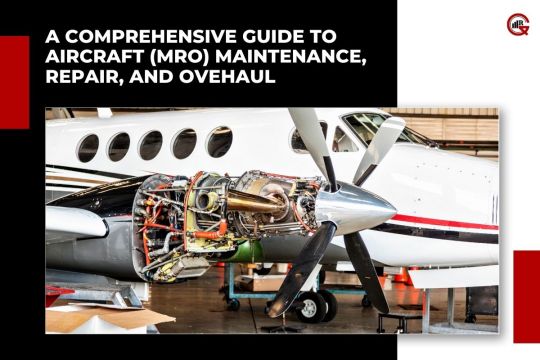
In the aviation industry, safety is paramount, and the reliability of aircraft is non-negotiable. Aircraft Maintenance, Repair, and Overhaul (MRO) is the cornerstone of aviation safety, ensuring that aircraft remain in airworthy condition throughout their operational lifespan. In this article, we delve into the world of Aircraft MRO, exploring its importance, key processes, challenges, and future trends shaping the industry.
Importance of Aircraft MRO:
Aircraft Maintenance, Repair, and Overhaul (MRO) encompass a range of activities aimed at ensuring the airworthiness and operational integrity of aircraft. These activities are crucial for several reasons:
Safety: The primary goal of Aircraft MRO is to uphold safety standards and prevent accidents by maintaining aircraft in optimal condition. Regular inspections, repairs, and component replacements are essential to identify and rectify potential safety hazards before they compromise flight operations.
Reliability: Commercial airlines rely on the reliability of their fleet to maintain schedules, meet customer expectations, and safeguard their reputation. Effective MRO practices help minimize unscheduled maintenance events and ensure aircraft availability when needed.
Regulatory Compliance: Aviation authorities, such as the Federal Aviation Administration (FAA) and the European Union Aviation Safety Agency (EASA), impose stringent regulations and guidelines on aircraft maintenance to ensure compliance with safety standards. MRO providers must adhere to these regulations to maintain their operating certifications.
Cost Management: Efficient aircraft MRO operations can significantly impact the cost-effectiveness of airline operations. Proactive maintenance strategies, predictive analytics, and inventory optimization help minimize downtime, reduce maintenance costs, and extend the operational lifespan of aircraft.
Key Processes in Aircraft MRO:

Aircraft Maintenance, Repair, and Overhaul (MRO) encompass a diverse range of activities, including:
Line Maintenance:
Line maintenance involves routine inspections, servicing, and minor repairs performed on aircraft between flights or during layovers at airports.
Trained maintenance technicians conduct visual checks, system tests, and component replacements to ensure aircraft are airworthy and compliant with regulatory requirements.
Base Maintenance:
Base maintenance encompasses more extensive maintenance tasks, including scheduled inspections, repairs, and modifications that require aircraft to be taken out of service for an extended period.
These activities may include engine overhauls, structural repairs, avionics upgrades, and interior refurbishments conducted in dedicated maintenance hangars equipped with specialized tools and equipment.
Component Maintenance:
Component maintenance involves the repair, overhaul, and testing of individual aircraft components, such as engines, landing gear, flight control systems, and avionics.
Specialized repair facilities, known as Component Repair Shops (CRS), perform in-depth inspections, troubleshooting, and refurbishment of components to restore them to airworthy condition.
Engine Overhaul:
Engine overhaul is a critical aspect of aircraft maintenance, involving the disassembly, inspection, repair, and reassembly of aircraft engines to ensure optimal performance and reliability.
Skilled technicians and engineers follow manufacturer specifications and rigorous quality control processes to overhaul engines and replace worn or damaged parts.
Challenges in Aircraft MRO:

Despite its importance, Aircraft Maintenance, Repair, and Overhaul (MRO) face several challenges:
Technological Complexity:
Modern aircraft features advanced avionics, composite materials, and digital systems that require specialized skills and equipment for maintenance and repair.
MRO providers must invest in training programs and technology upgrades to keep pace with technological advancements and ensure competency in handling complex aircraft systems.
Cost Pressures:
Aircraft MRO operations are subject to cost pressures driven by factors such as fuel prices, labor costs, regulatory compliance, and competition.
Aircraft MRO providers must balance the need for cost-effective solutions with maintaining high-quality standards and safety compliance to remain competitive in the market.
Supply Chain Disruptions:
Global supply chain disruptions, such as material shortages, logistics delays, and geopolitical tensions, can impact the availability of critical components and spare parts for aircraft maintenance.
MRO providers must adopt robust supply chain management strategies, diversify sourcing options, and maintain strategic inventory reserves to mitigate supply chain risks.
Regulatory Compliance:
Compliance with regulatory requirements is paramount in aircraft maintenance to ensure airworthiness and safety.
Aircraft MRO providers must navigate complex regulatory frameworks, undergo regular audits, and stay updated on evolving aviation regulations to maintain certification and accreditation.
Future Trends in Aircraft MRO:
Despite the challenges, several trends are shaping the future of Aircraft Maintenance, Repair, and Overhaul (MRO):
Digital Transformation:
Digital technologies, such as predictive maintenance, IoT sensors, and data analytics, are transforming MRO operations, enabling proactive maintenance strategies, real-time monitoring, and predictive insights.
AI-driven predictive analytics and machine learning algorithms help forecast equipment failures, optimize maintenance schedules, and reduce downtime.
Additive Manufacturing:
Additive manufacturing, or 3D printing, is revolutionizing aircraft component manufacturing and repair by enabling rapid prototyping, on-demand part production, and cost-effective repairs.
MRO providers are leveraging additive manufacturing techniques to produce complex components, reduce lead times, and enhance fleet readiness.
Augmented Reality (AR) and Virtual Reality (VR):
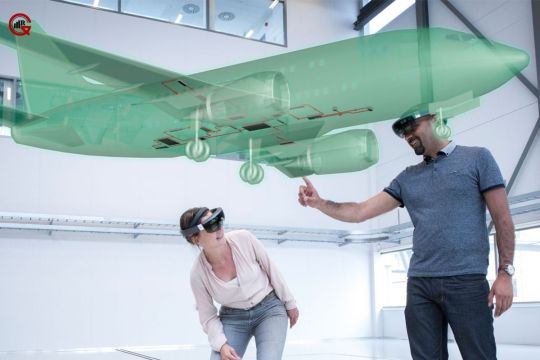
AR and VR technologies are enhancing training programs, remote assistance, and maintenance procedures by providing immersive, interactive experiences for technicians.
Technicians can access digital manuals, overlay virtual instructions, and visualize equipment configurations in real-time, improving efficiency and accuracy in MRO tasks.
Conclusion:
Aircraft Maintenance, Repair, and Overhaul (MRO) are critical functions in ensuring the safety, reliability, and airworthiness of aircraft. By implementing effective maintenance strategies, leveraging advanced technologies, and addressing key challenges, MRO providers can optimize operations, enhance safety standards, and meet the evolving needs of the aviation industry. With digital transformation, additive manufacturing, and augmented reality shaping the future of aircraft MRO, the industry is poised for innovation and growth in the years to come.
0 notes
Text
Mastering the Skies: Drone Training Courses in Melbourne
As the demand for drone technology continues to soar, so does the need for skilled and certified drone operators. Melbourne, known for its vibrant tech scene and innovative spirit, offers a variety of drone training courses to meet this growing demand. Whether you're a novice looking to take your first flight or an experienced pilot seeking advanced certifications, there's a course tailored to suit your needs.
Introduction to Drone Flying:
For beginners eager to take their first steps into the world of drones, introductory courses provide a comprehensive overview of drone technology, flight principles, and safety procedures. These courses typically cover basic piloting skills, drone regulations, and best practices for safe and responsible flying.
Remote Pilot License (RePL) Course:
Aspiring professional drone pilots aiming to fly drones for commercial purposes must obtain a Remote Pilot License (RePL). RePL courses in Melbourne are designed to prepare candidates for the Civil Aviation Safety Authority (CASA) certification exam. Participants learn advanced flight maneuvers, aerial photography techniques, and gain a deep understanding of aviation regulations and compliance requirements.
Advanced Drone Operations:
For experienced pilots looking to expand their skill set and pursue specialized applications, advanced drone training courses offer in-depth instruction on topics such as aerial mapping, surveying, cinematography, and industrial inspections. These courses often include hands-on training with advanced drone models and sophisticated payloads.
Drone Maintenance and Repair:
Ensuring the airworthiness of drones is crucial for safe and reliable operations. Drone maintenance and repair courses provide participants with the knowledge and skills needed to troubleshoot common issues, perform routine maintenance tasks, and repair damaged components. Participants learn about drone mechanics, electronics, and software systems, equipping them with the expertise to keep their drones in optimal condition.
Legal and Ethical Considerations:
Operating drones comes with legal and ethical responsibilities, and understanding these considerations is essential for all drone pilots. Courses focusing on legal and ethical aspects cover topics such as privacy laws, airspace regulations, liability issues, and ethical decision-making. By gaining a solid understanding of these principles, drone operators can navigate legal challenges and operate their drones responsibly.
Conclusion:
Drone training courses Melbourne offer a pathway for individuals to acquire the knowledge, skills, and certifications necessary to excel in the dynamic field of drone technology. Whether you're interested in recreational flying, commercial applications, or aerial photography, there's a course available to help you achieve your goals and take your drone piloting skills to new heights.
For more info visit here:- Drone License Sydney
0 notes
Text
L3Harris Avionics Repair Station Awarded European Military Airworthiness Requirement Part 145
The L3Harris Avionics Products Repair Station (NN2R037L) in Grand Rapids, Michigan became the first U.S. repair station to be awarded EMAR-145 (European Military Airworthiness Requirement Part 145) certification. EMAR-145 is the governing regulation for Military Maintenance Organizations (MMOs) and has recently become a requirement for contractor run maintenance organizations, known as Approved Maintenance Organizations (AMOs). Airbus Helicopters approached L3Harris Avionics in early 2023 with the requirement for EMAR-145 certification to be implemented by January 2025 to support delivery of the H160M to the French Government.
#military #defense #defence #militaryleak #helicopter
The L3Harris Avionics Products Repair Station (NN2R037L) in Grand Rapids, Michigan became the first U.S. repair station to be awarded EMAR-145 (European Military Airworthiness Requirement Part 145) certification. EMAR-145 is the governing regulation for Military Maintenance Organizations (MMOs) and has recently become a requirement for contractor run maintenance organizations, known as Approved…
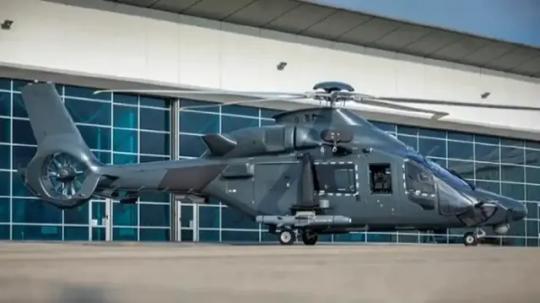
View On WordPress
0 notes
Text
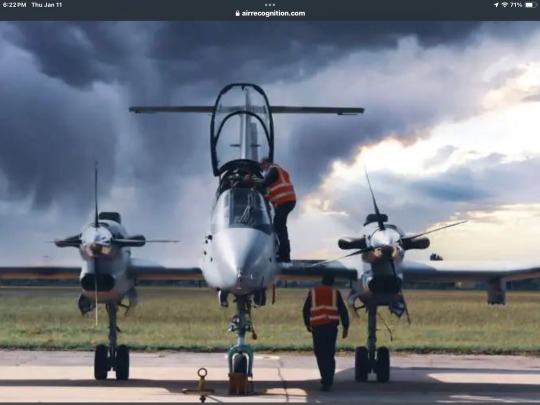
Falklands war-era Argentinian IA-58 Pucara ground support airplane modernized into ISR platform
Thursday, 11 January 2024 13:10
The IA-58 Pucará's engine replacement program, now known as the Pucará Fénix, has reached a pivotal milestone with the achievement of its remotorization certification from Argentina's Joint Military Aeronautical Airworthiness Directorate (Digamc). This certification, awarded to the Argentine Aircraft Factory (FAdeA), signifies the commencement of the series aircraft's update.
Ezoic
Follow Air Recognition on Google News at this link
Falklands Argentina IA 58 Pucara ground assault airplane modernized into modern ISR Platform 001The Argentinian IA-58 Pucarás will benefit from an engine replacement program (Picture source: FAdeA)
EzoicThis evolution is the result of a collaboration between FAdeA, the Argentine Air Force (FAA), Digamc, and international partners such as Pratt & Whitney Canada P&WC, Hartzell, and IAl. The joint effort bore fruit after over 150 hours of flight testing and 109 test flights, leading to the equipping of each aircraft with two Pratt & Whitney PT6A-62 turboprop engines and Hartzell four-blade propellers.
Ezoic
The Pucará Fénix, formerly a ground-attack aircraft, is now intended for ISR (Intelligence, Surveillance, and Reconnaissance) missions. This shift towards modern surveillance functions contrasts with the attack role of the rest of the Pucará fleet.
The project includes a complete modernization of the cockpit and avionics systems, the addition of air conditioning systems, and the removal of obsolete components. The Pucará Fénix thus becomes the platform for the progressive development of the ISR POD, with enhancements such as AESA active antenna radars and EO/IR sensors envisioned in future configurations.
The remotorization certification of the Pucará Fénix represents a significant advancement in modernizing Argentina's aerial arsenal. By pivoting towards ISR capabilities, Argentina is adapting its military equipment to the current demands of defense and surveillance operations.
The development of the IA-58 Pucará, initiated in August 1966 by the Argentine Air Force (FAA), aimed to create an aircraft suitable for close air support (CAS) and counter-insurgency (COIN) missions. The first prototype, named AX-2 Delfin, equipped with 904 hp Garrett TPE331I/U-303 engines, made its maiden flight on August 20, 1969. "Pucará", meaning fortress in the Quechua language, was later fitted with French Turbomeca Astazou XVI G engines in other prototypes.
Constructed entirely of metal, the IA-58 is designed to operate in light guerrilla conditions, with an armored cockpit and windshield and landing gear suited for unprepared runways. It is notable for its ability to take off in just 80 meters using JATO rockets and is designed for simple maintenance. This two-seater is equipped with Martin-Baker Mk 6AP6A zero/zero ejector seats.
The serial version IA-58A, or Pucara Alpha, first flew on November 8, 1974, and was delivered in 1975 to the III Air Brigade, with 108 units built until 1986. The IA-58B, or Pucara Bravo, featured 30 mm DEFA 553 cannons and improved avionics but was built in only one example. Similarly, the IA-58C (Pucara Charlie), a single-seat version with a HUD, IFF, and additional hardpoints, was built in only one example. Finally, the IA-66, equipped with more powerful Garrett engines, was also produced in a single example.
The IA-58 Pucarás were deployed by Argentina during the Falklands War, where, despite their numbers, they were unsuited against an adversary like the British, suffering heavy losses mainly on the ground. They did, however, manage to shoot down a Westland Scout. After the conflict, 11 aircraft were captured by the British, including 4 in flying condition, and 6 are now displayed in museums.
With the emergence of more advanced technologies and the evolution of military requirements, the Pucará began to show signs of obsolescence, particularly in its engines and avionics systems. In response to these challenges, the Pucará Fénix project was launched, aiming to modernize the aircraft through remotorization with Pratt & Whitney PT6A-62 turboprop engines and the update of avionics systems and propellers. This renewal has also led to a significant shift in the aircraft's role, transforming it from a ground attack aircraft to an ISR (Intelligence, Surveillance, and Reconnaissance) platform, suited to contemporary needs for reconnaissance and surveillance. The Pucará Fénix is now envisioned as an evolutionary platform, capable of progressively integrating cutting-edge technologies such as AESA active antenna radars and EO/IR sensors, thus marking its transition to a more sophisticated and strategic role in the Argentine military.
@Airrecognition via X
5 notes
·
View notes
Text
Did not realize just how much my reading list this year has been until I just started stacking all this to get off my bed. :'))
And I'm still missing 3 other books that's in my locker at school. (Another Airframe and General AMT. This is from studying for both my private pilot and aviation maintenance certificates. Doesn't include antique aviation books I've been reading as well (cause i want to understand the old old planes too!! 🥺) or all the maintenance manuals, Airworthiness directives, nor all the Ultra Pup's manuals. I have never read so much in my life ((':

(Excluding the comic & Allspark Almanac at the very bottom of course 😅 I just started stacking on the nearest empty space to get my bed back 😅😭😅)
The trapperkeeper and 2 notebooks? Stuffed to the brim with notes notes notes and more notes.
Powerglide for scale?
He was helping me visualize some landing/approach & patten stuff. He did a good job. :)
#fhfhfhhfff this is why i say im in information overload rn#and this is jsut the tip of the iceberg there will be much much much more#when i start training for additional pilot ratings 8)#yah i kno the gleim is a little old from like 2021 i think but ill update it when i get the money :'))#a&p school takes up all of my time so im broke rn ((':#itll all be worth it tho 😌#why? cause planes :) planes are worth it#planeposting
5 notes
·
View notes
